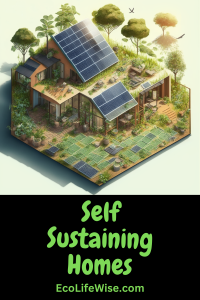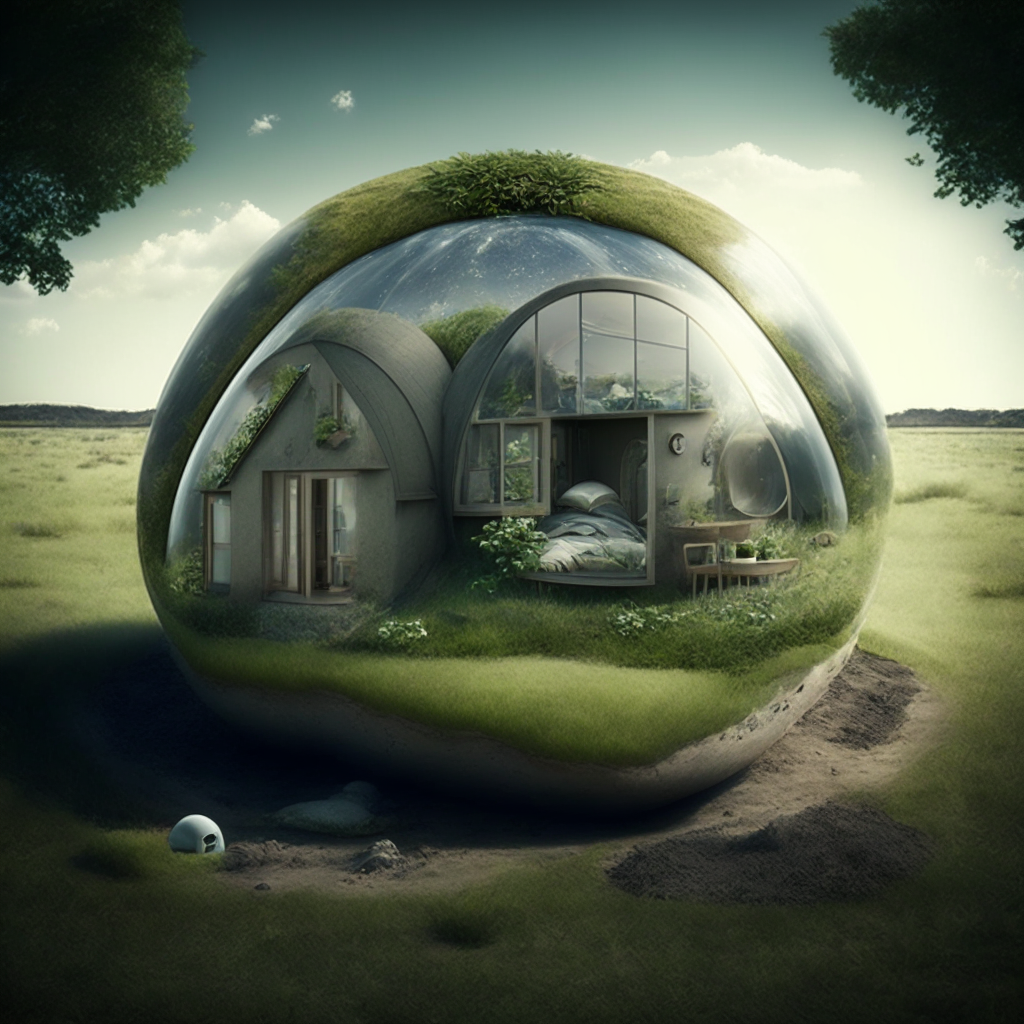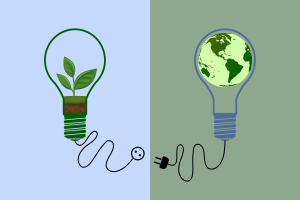Introduction
Howdy, fellow home enthusiasts and curious readers! Have you ever pondered how to live off the grid, or the possibility of living in a completely independent home? A home that provides for itself, and in essence, is its own self-contained biodiversity? Well, my friends, that’s exactly what we will discuss today. Welcome to the intriguing, challenging, and immensely rewarding world of self-sustaining homes! Over time, I’ve found myself drawn toward sustainable living and how it can change our relationship with the environment. It’s a subject I’m thrilled to delve into with you all.
What are Self-Sustaining Homes?
Self-sustaining homes are residences designed to be independent from public utilities and services. They generate their own electricity, manage waste, and often grow their own food. These homes are the epitome of sustainability, leveraging renewable energy sources and other green technologies.
The Importance of Sustainability
Our current way of life is often wasteful, leading to environmental degradation and climate change. A self-sustaining home tackles these issues head-on. It minimizes waste, lowers energy consumption, and decreases the home’s carbon footprint. The approach isn’t just good for the Earth; it’s also beneficial for your wallet!
Why Choose Self-Sustaining Homes?
Before we deep dive into the technicalities and complexities, let’s take a step back and answer a fundamental question: why should we even consider choosing a self-sustaining home?
Eco-Friendly
The first and perhaps the most impactful reason is the eco-friendliness of these homes. While comfortable and often luxurious, traditional homes can leave a substantial carbon footprint. Energy consumption, water usage, waste production; all these aspects of a typical home contribute to the burden on our beautiful planet. But here’s where these homes step in and completely revolutionize the game. These unique dwellings that utilize sustainable architecture are designed to drastically lessen our carbon footprint, extensively using renewable resources and minimizing non-renewable energy. Imagine living a life where every day, your very existence contributes to a healthier, greener planet.
Cost-Effective
And here’s a surprise – choosing a self sustaining home isn’t just a philanthropic act towards Earth. It’s also a decision that could be very kind to your wallet. At first glance, they can appear to be a significant investment, but let’s look at the bigger picture. These homes, once established, drastically cut down on utility bills as they generate their own energy, manage their water supply, and take care of waste. Over the years, these savings pile up, making the initial investment more than worth it.
Independence
Think of power outages, water supply disruptions, and the constant, ever-growing utility bills. Now, imagine a life where these concerns do not exist. That’s the beauty of a self-sustaining home. It offers an unparalleled sense of independence, freeing you from the constraints and dependencies of external utilities.
Key Features of Self-Sustaining Homes
So, what makes a home self-sustaining? Let’s look at some of the key features of these homes.
Renewable Energy Sources
A self sustaining home primarily relies on renewable sources for its energy needs.
Solar Panels
The most common and popular renewable energy source is sunlight, harvested using solar panels. These panels convert sunlight into electricity, which powers the home and its various appliances. Solar energy can also be used for heating purposes, such as water heating.
Wind Turbines
Wind turbines are another excellent renewable energy source for homes located in areas with significant wind flow. Wind turbines convert kinetic energy from the wind into mechanical energy, which is then transformed into electricity.
Water Management
There’s a golden rule – every drop of water is precious. And to adhere to this rule, these homes have advanced water management systems.
Rainwater Harvesting
A common and highly effective method is rainwater harvesting. This system collects and stores rainwater that falls on your property. After appropriate treatment, this water can then be used for various purposes, such as irrigation, toilet flushing, and even drinking. Doing so can significantly reduce our dependence on the municipal water supply.
Greywater Recycling
Another innovative water-saving measure is greywater recycling. Greywater is wastewater from non-toilet fixtures such as sinks, showers, and washing machines. While this water might seem ‘wasted,’ with the proper treatment, it can be recycled and used for non-drinking purposes. This can further reduce the need for external water supply.
Waste Management
Waste is another critical aspect that is addressed. Proper waste management is implemented through various means, such as composting toilets and waste-to-energy systems. These methods help reduce the home’s waste output and transform waste into a valuable resource.
How to Build a Self Sustaining Home
By now, I’m sure you’re excited to embark on this amazing journey. But where do we start? Here are some steps to guide you.
Selecting the Location
The location is one of the most crucial decisions you must make at the planning stage. You’ll need an area with ample sunlight for most of the year and, if possible, regular wind flow. The accessibility to water resources might also be a deciding factor.
Choosing the Right Materials
It isn’t just about the internal systems; it’s also about the very fabric of the house. The materials you choose can significantly impact the sustainability factor of your home. Opt for sustainable and durable materials like bamboo, recycled steel, and reclaimed wood. These environmentally friendly materials add a rustic charm and aesthetic appeal to your home. Don’t forget the excitement of adding your very own indoor greenhouse!
Hiring Professionals or DIY
You can take the professional or DIY route to construct your dream home. Both options have their own merits. Hiring professionals might ensure precision and speed, but taking the DIY path could give you an in-depth understanding of your home’s systems and a greater sense of accomplishment.
Maintaining a Self Sustaining Home
Once you’re set up, it’s essential to maintain it well to ensure smooth functioning. Regular check-ups of renewable energy systems, water management systems, and waste management equipment are necessary. A well-maintained home will serve you efficiently for many years to come.
The Evolution of Self Sustaining Homes
As we delve deeper, looking back at the first self-sustaining home and its journey is intriguing. The genesis can be traced back to the late 1960s and early 1970s, around the time of the first Earth Day. An architect named Michael Reynolds envisioned a home that would be completely self-reliant. He called it the ‘Earthship,’ the first of these homes that utilized solar and wind power and even incorporated rainwater harvesting and greywater recycling systems. Despite the ingenious design, the Earthship faced various challenges, including temperature regulation issues and problems with building code regulations.
However, since then, self-sustaining homes have evolved by leaps and bounds. The issues faced by the Earthship laid a foundation for architects and designers worldwide to create innovative and more efficient designs. These modern homes effectively balance sustainability with comfort and luxury, minimizing their environmental impact without compromising the quality of life.
Where Are Self-Sustaining Homes Most Popular?
Globally, several countries are leading the way in embracing the future. Scandinavian countries like Sweden, Denmark, and Norway are pioneers in this sector, primarily due to their government’s support for sustainable living and strict building regulations promoting energy efficiency. Germany also stands out, especially with its ‘Passive House’ concept, a rigorous voluntary standard for energy efficiency in buildings, reducing its ecological footprint.
In North America, Canada and the U.S. have seen a significant surge in self-sustaining homes, especially in eco-conscious states like California and Oregon. The tiny house movement and off-the-grid lifestyle trend have further spurred the growth of these homes.
Government Initiatives and Innovations
Government initiatives play a crucial role in promoting these homes. Many countries offer tax incentives and subsidies for installing renewable energy systems and energy-efficient appliances. The U.S. federal government, for example, provides tax credits for solar panel installations, and many states have additional incentives.
Innovations in sustainable home technology have been instrumental in making self-sustaining homes more efficient and accessible. The advancements are remarkable, from highly efficient solar panels and compact wind turbines to smart home systems that optimize energy consumption. Developing energy-efficient appliances, smart insulation materials, and eco-friendly construction materials has further enhanced the potential of self-sustaining homes.
The Future of Self-Sustaining Homes
The future of self-sustaining homes looks promising and exciting. We could see self-sustaining homes capable of producing surplus energy, effectively turning them into mini power plants. Such homes could feed excess power back into the grid, benefiting the community.
Another exciting prospect is the integration of self-sustaining homes with electric vehicles (EVs). Your home could power your car, and vice versa. In case of a power outage, your EV could serve as a backup battery for your home.
Scientific Studies and Trials
Several scientific studies and trials are being conducted to understand the real-world implications of self-sustaining homes. One such study conducted by the National Renewable Energy Laboratory (NREL) in the U.S. found that sustainable homes can reduce energy usage by up to 80% compared to traditional homes.
In another project, the University of British Columbia built the “Nest”, a self sustaining home that houses over 400 students. The building uses renewable energy sources and incorporates advanced water and waste management systems. The project serves as a living lab, providing invaluable data on sustainable living.
Conclusion
The concept of self-sustaining homes is more than just an architectural or environmental trend; it’s a testament to humanity’s potential to harmonize with nature in an era where our impact has often been detrimental. These homes, in their myriad designs and functionalities, offer a glimpse into a future where independence, efficiency, and sustainability aren’t just buzzwords but are integral to our daily lives. They challenge the conventional notions of modern living, pushing us to rethink our relationship with resources, waste, and even the broader ecosystems in which we live.
Moreover, the value of a self-sustaining home extends beyond its physical boundaries. It’s a mindset, a commitment to a more responsible way of living, and a beacon of innovation. Every raindrop collected, every kilowatt of energy generated, and every vegetable harvested from a backyard garden signifies a step towards a world where homes not only provide shelter but also nurture their surroundings.
However, it’s essential to remember that while the allure of total self-sufficiency is strong, the path to achieving it is filled with challenges, both technical and financial. Yet, as with all things worthwhile, the journey of transitioning to such homes promises enriching experiences, invaluable lessons, and a deeper appreciation for our planet.
In a rapidly changing world, where concerns about climate change, resource depletion, and sustainable living are at the forefront, self-sustaining homes stand out as symbols of hope. They demonstrate that with innovation, determination, and a respect for nature, we can carve out living spaces that not only cater to our needs but also contribute positively to the world. As we look ahead, one can only imagine how these homes will evolve, but one thing is certain: they’re paving the way for a brighter, greener future for all.
Frequently Asked Questions
What is a self-sustaining home?
- A self sustaining home is a dwelling designed to be entirely or primarily independent of public utilities, generating its own power, managing its water supply, and handling its waste.
Are self-sustaining homes cost-effective?
- While the initial investment in a self sustaining home might be significant, the long-term savings on utility bills make them a cost-effective choice in the long run.
How do self-sustaining homes generate electricity?
- Self-sustaining homes commonly use renewable energy sources like solar and wind power to generate electricity. This is done using solar panels and wind turbines installed on the property.
What is the future of self sustaining homes?
- The future of self sustaining homes is promising. We might see homes that generate enough power for their needs and produce surplus energy that could be fed back into the grid. Integration with electric vehicles is another exciting possibility.
What are the challenges in building a self-sustaining home?
- Challenges in building a self-sustaining home can include securing the initial investment, finding a suitable location, choosing the right materials and technologies, and adhering to building codes and regulations. However, with proper planning and professional assistance, these challenges can be effectively addressed.






Pingback: How to Live Off the Grid: Your Ultimate Guide
Pingback: Sustainable Architecture: A Guide to the Future of Design
Pingback: Sustainable Bedding: The Ultimate Guide - Eco Life Wise
Pingback: Indoor Vine Plants: Greenery and Serenity for Your Home
Pingback: Indoor Greenhouse: Cultivate Your Green Thumb
Pingback: Ultracompost: The Future of Organic Farming - Eco Life Wise
Pingback: History of Recycling: A Journey From Trash to Treasure
Pingback: Eco Friendly Sustainability: Introducing The GreenPrint Initiative
Pingback: Eco Friendly Materials: Your Ultimate Guide to Sustainable Living
Pingback: Navigating the World of Sustainable Clothing Brands
Pingback: Facts About Solar Energy: Harnessing the Sun's Power
Pingback: Best Electric Vehicles: A Comprehensive Guide
Pingback: Conservation vs Preservation: Who's Side Are You On? | Eco Life Wise
Pingback: Upcycled Clothes: The Art Of Renewing Your Wardrobe | Eco Life Wise
Pingback: How Can I Make My Home More Energy-efficient? | Eco Life Wise
Pingback: Self Sustainable Homes: 7 Practical Reasons Why You Need One Today! | Eco Life Wise
Pingback: Examples of Sustainability: How They Shape Our World | Eco Life Wise
Pingback: Are Bioplastics Better Than Traditional Plastics? 6 Factors You May Not Know | Eco Life Wise
Pingback: Off Grid Solar System: A Step Toward Self Sufficiency
Pingback: Sustainable Packaging: 10 Steps to Success | Eco Life Wise
Pingback: Organic Greens: Unlock Nature's Magic in Your Kitchen! | Eco Life Wise
Pingback: Biodegradable Definition: The New Buzzword You Can't Ignore | Eco Life Wise
Pingback: Sustainable Development: 10 Bold Approaches | Eco Life Wise
Pingback: Why Should We Reduce Single-use Plastics? | Eco Life Wise
Pingback: Unlock Sustainability Goals: Ditch Non-Renewable Polymers for Eco-Alternatives | Eco Life Wise
Pingback: Net Zero Revolution: North Carolina Leading the Way | Eco Life Wise
Pingback: How Do Electric Cars Help The Environment? 7 Practical Points to Ponder | Eco Life Wise
Pingback: How Do Solar Panels Work? New Solar Panels 101 | Eco Life Wise
Pingback: What Are The Benefits Of Using Natural Cleaning Products? 10 Nuggets | Eco Life Wise
Pingback: Why Is It Important To Protect Our Coral Reefs? 7 Powerful and Compelling Reasons | Eco Life Wise
Pingback: What Is The Importance Of Wetlands? 10 Significant Factors | Eco Life Wise
Pingback: What Are The Advantages Of Compostable Packaging? | Eco Life Wise
Pingback: Energy Efficient Homes: Your Ultimate Guide to Greener Living | Eco Life Wise
Pingback: Why Is Recycling Important? | Eco Life Wise
Pingback: How Do I Reduce Waste In My Kitchen? | Eco Life Wise
Pingback: How Do Self-sustaining Homes Manage Water And Waste? | Eco Life Wise
Pingback: Sustainable Development Goals: 17 Nuggets
Pingback: Sustainable Living: 8 Practical Benefits of the Sustainable Lifestyle | Eco Life Wise
Pingback: How Much Does It Typically Cost To Build A Self-sustaining Home? | Eco Life Wise